
Ideal Studying Abroad Experience
Design Research for an Ideal Studying Abroad Experience

Ideal Studying Abroad Experience
UX Research
This Project was focused on methods of contextual research by using techniques like interviews, focus groups, contextual inquiry, surveys and questionnaires and the creation of novel research methods—necessary to conduct relevant and useful research.
Project Context
This project helped us discover the different phases students go through while studying abroad- transition from their home country to a new country, learning the new cultures, adapting to diverse situations and living independently. This research project describes the experiences and opinions of students studying abroad.
Team
Namrata Chore, Akshaya Mohan, Goutham Thirumalesh, Dhruv Patel, Shaunak Patel
Timeline
4-6 months
My Role
Design Researcher
Methods & Techniques
In order to understand our users, we observed and interacted with them. The methods that we used to collect our data were- secondary research, observation, interviews, cultural probe, sensory cue kit and other data collected in the form of surveys.
Interviews
To gain more qualitative data, we conducted interviews with our users which lasted for about 50 mins on an average. Our interviewees were students who traveled to a different country for education.
We interviewed them through the mediums like video calls, phone calls, meeting personally and documented these by recording and making notes.
Observations
We used this technique to understand how our users interact with products and people and the challenges they face. We documented the observation by taking pictures and making notes and compiled them in an observation report.
We went to the places where students would frequent. We visited Forsyth Park, Foxy Loxy cafe, Kroger, Jen Library, classrooms and SCAD computer labs.
Cultural Probe
We conducted cultural probe as it uses a collection of tools, artifacts and tasks intended to provoke the user to look and think about their environment in new ways. The responses from these probes helped initiate a dialogue with our users.
Based on the information needed to research the topic, we created quantitative as well as qualitative questions to ask users in the form of an interactive activity.




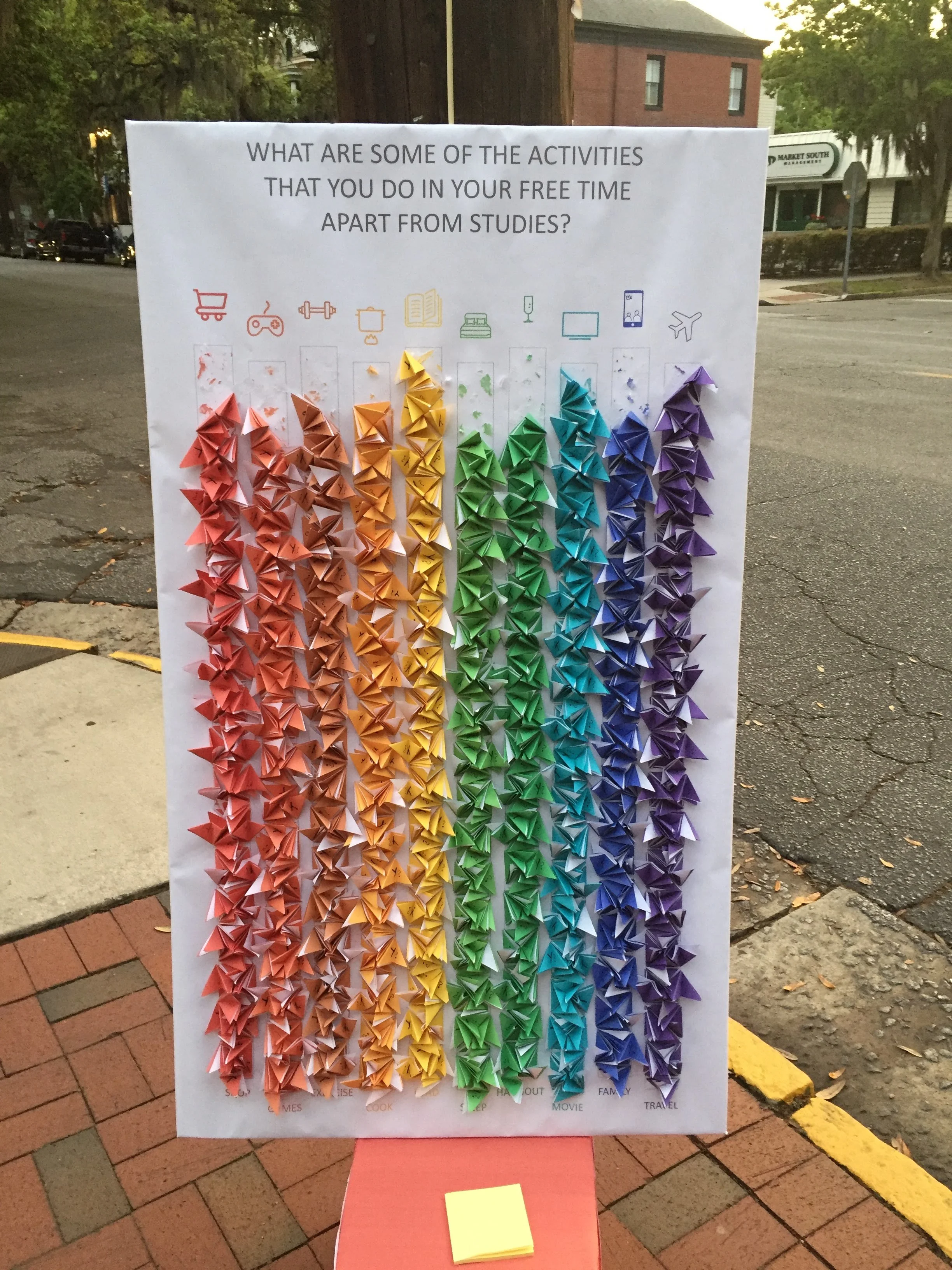
Sensory Cue Kit
We recruited few participants for the sensory cue workshop to understand the participants choices that could be analyzed in high frequency. We placed objects on a table, and used pictures and words to make it more specific in relation to the experience of studying abroad. Participants chose the objects that were relatable to them while answering the questions.


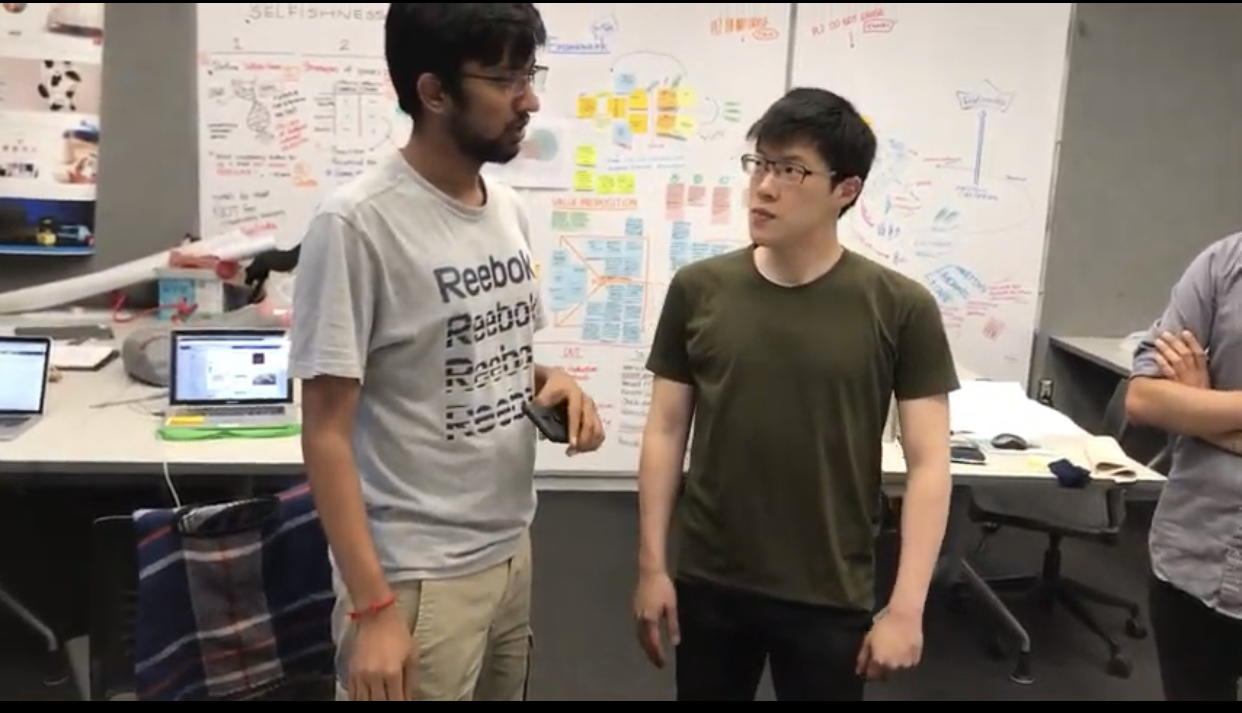
Affinity Mapping
Yellows- We wrote our data points from secondary and primary research on the yellow post its and began clustering them. As a group we had 1200 individual data points.
Blues- After grouping the data points, we gave the groups a header by writing on the blue sticky notes. They were a detailed description of the yellow clusters.
Pinks- We grouped all the blue sticky notes and filtered the outliers and gave the a header by writing on pink sticky notes.
Greens- We then grouped the pink sticky notes and gave a header to them by writing on the green sticky notes, which was the last stage of the process.
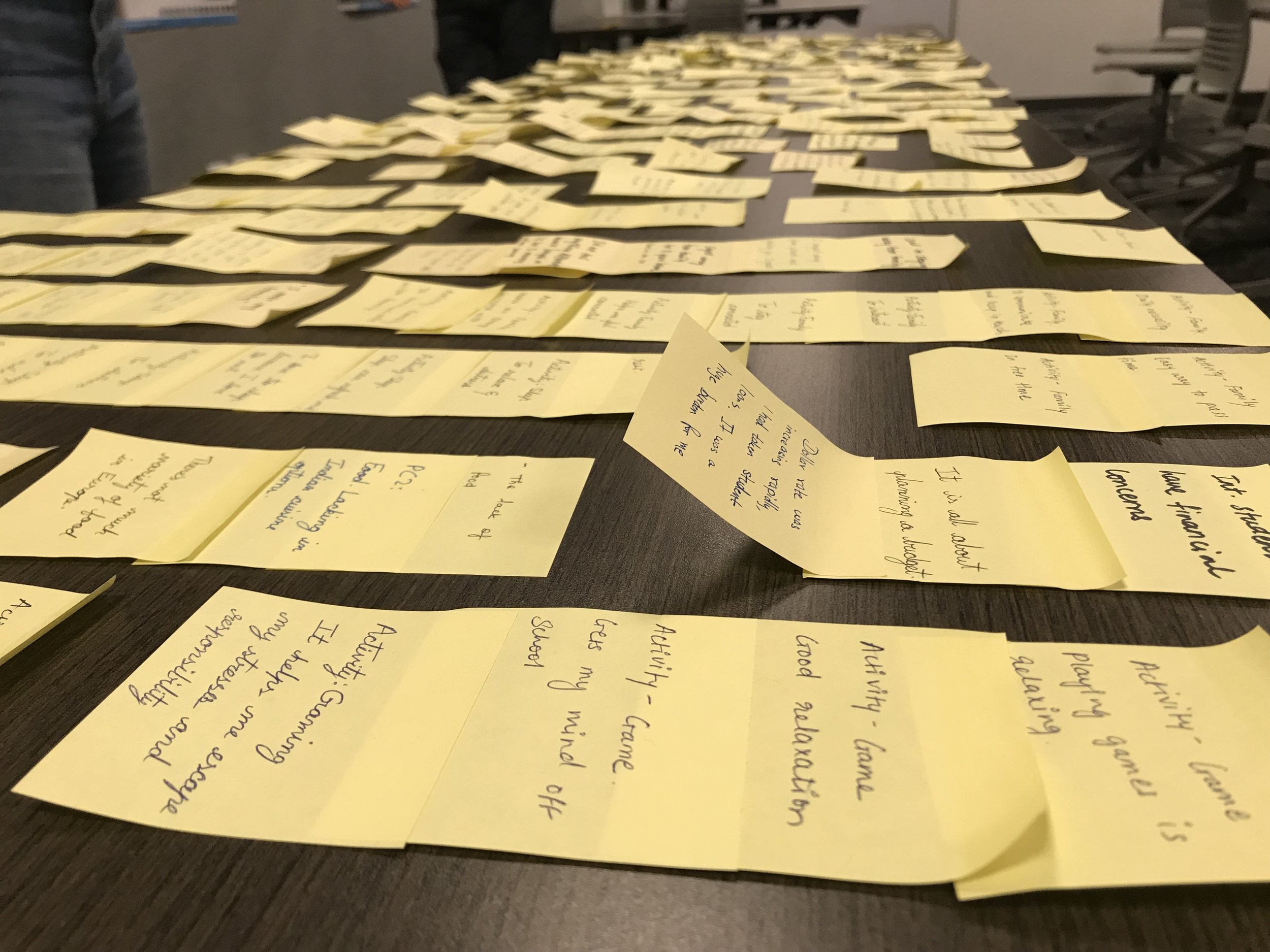
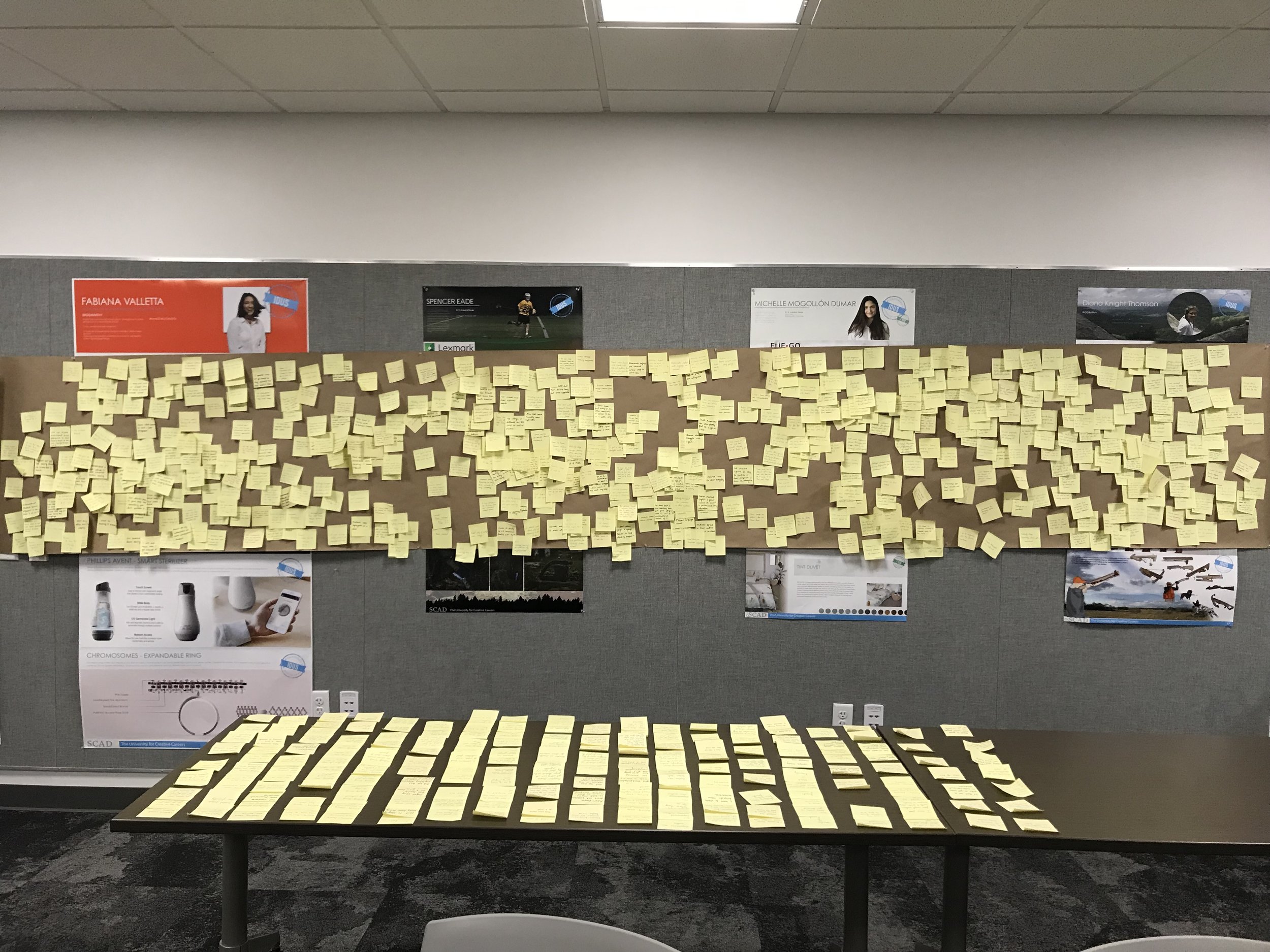
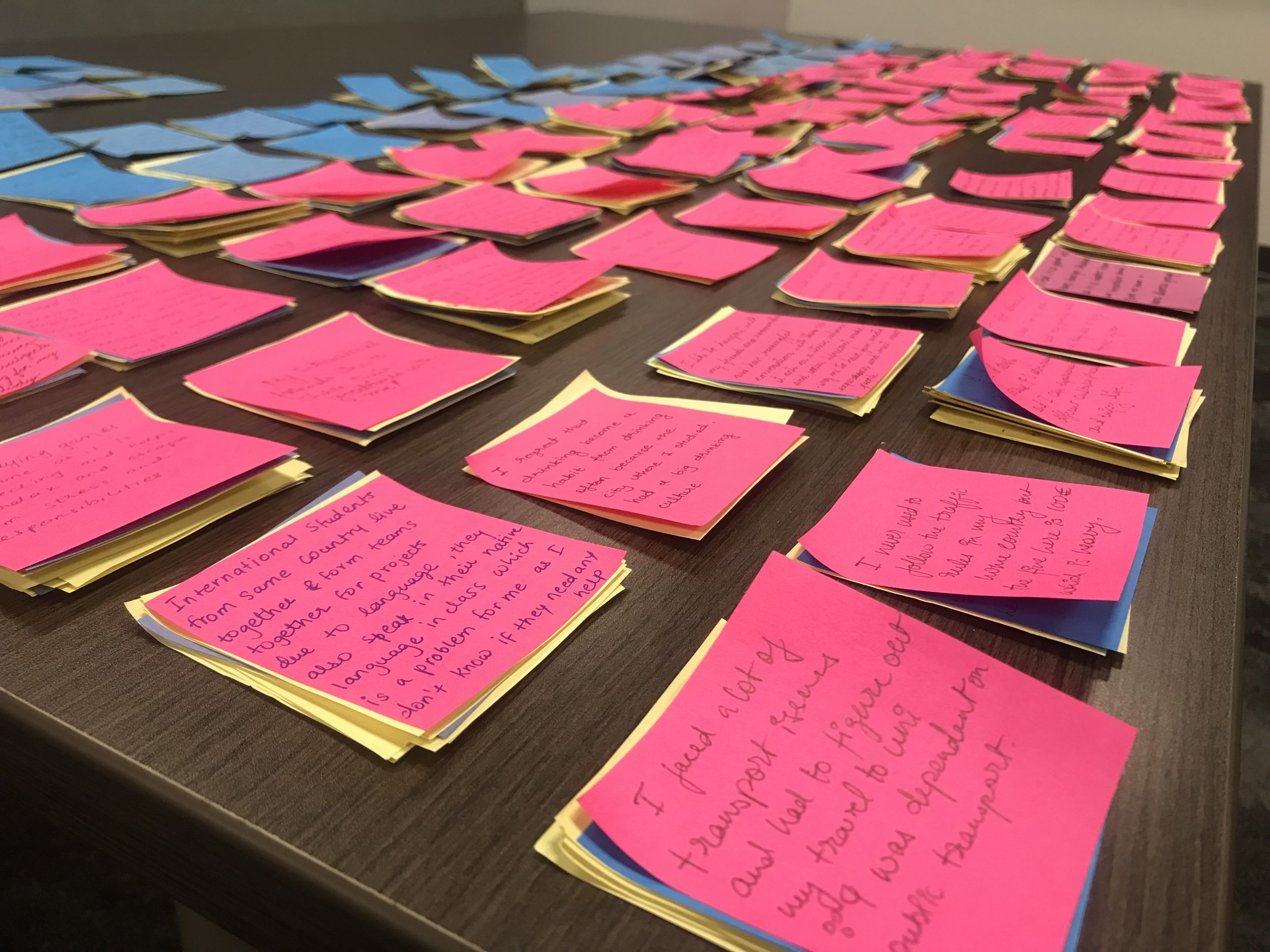

Framework
By using the various methods and techniques of design research, the framework is made in a way to deliver the insights of the user. It is then organized into nine components which were based on 1200 data points that we had collected.
The size of the hexagon varies according to the frequency of the user’s insights.
The hexagons then branch to reveal more details of the insights. Each of these insights and the corresponding details have been explained in the magazine.
Design Opportunities
After looking at the insights from our research, we considered the following opportunities which were in high frequency from the students to make their studying abroad experience better:
How might we make studying abroad more affordable for students?
How might we make the experience of studying abroad stress free for students?
How might we create an environment for international students which makes them feel less homesick?
We created a magazine during the course which highlights all the insights in detail which can be seen in the framework. View the magazine here -
